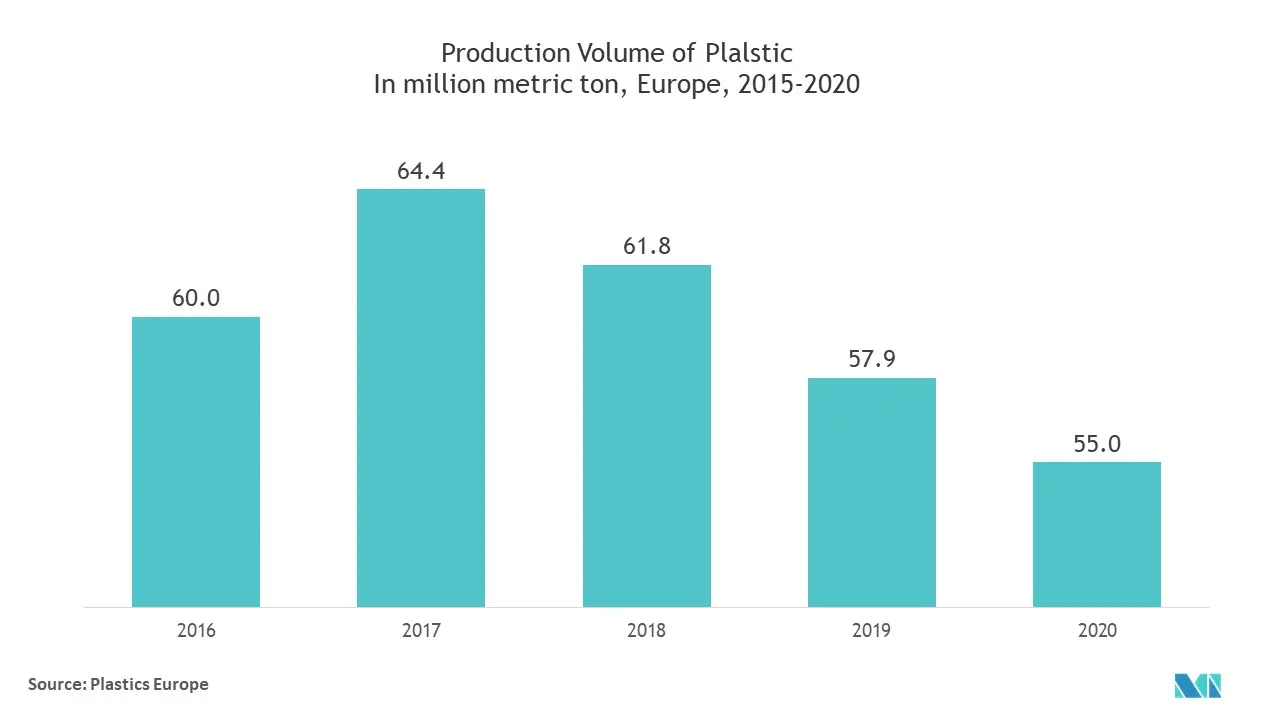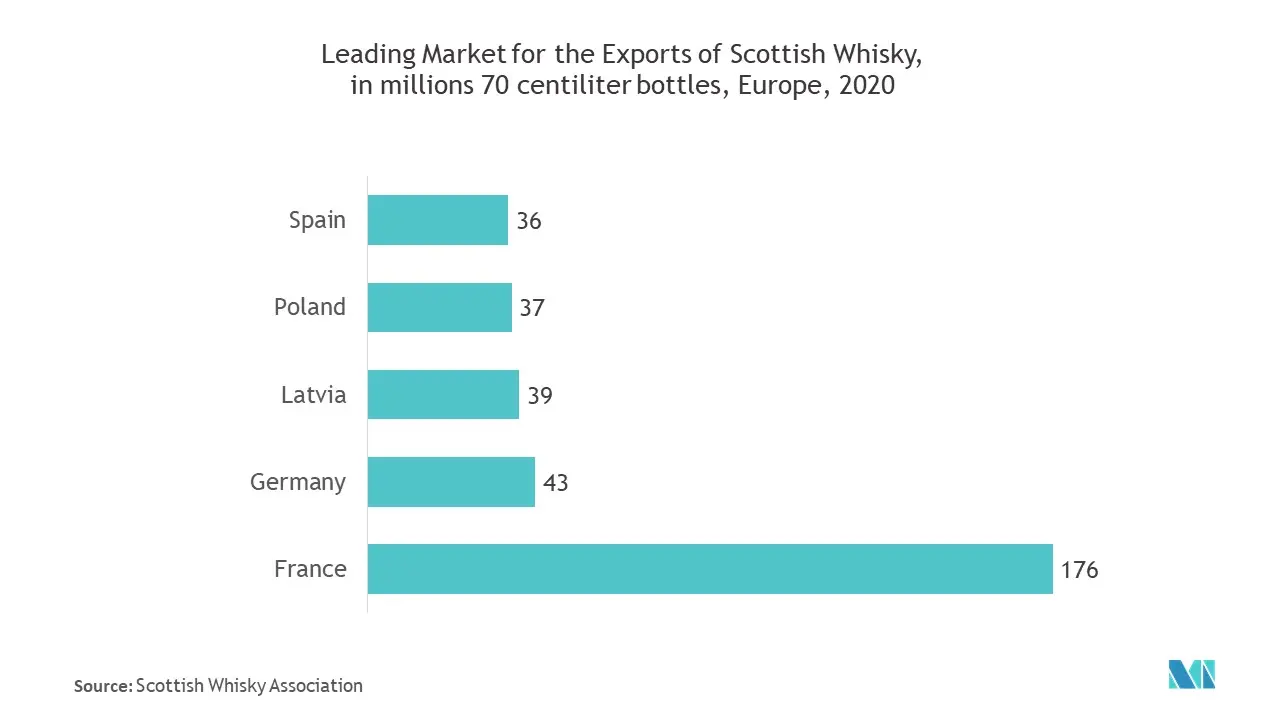Market Trends of Europe Beverage Packaging Industry
This section covers the major market trends shaping the Europe Beverage Packaging Market according to our research experts:
Plastic Packaging Significance in Beverage Industry
- The reduction of material in the blow-molded Plastic containers is driven by cost reduction (material and transportation) and the increasing consumer demand for sustainable packaging. In Europe, there is a significant latent potential for the barrier PET bottles in wine, beer, and specialty alcoholic beverages where the penetration of plastic bottles is very low.
- Moreover, of all the types of plastic, it is believed that using PET will help in manufacturing the lightest bottle and container. PETRA is a clear, strong, and lightweight plastic widely used for packaging beverages, especially convenience-sized soft drinks, juices, and water. Virtually all single-serving and 2-liter bottles of carbonated soft drinks and water sold in the United Kingdom are made from PET.
- In 2015, the European Commission issued the EU plastic bags directive to reduce single-use plastic bag usage from 200 per person to 80 per person by 2020 and 40 per person by 2025. This step, coupled with the single-use plastic directive, which aims to ban expanded polystyrene food containers, beverage containers, and cups by 2021, provides an opportunity for vendors to invest in recyclable plastics.
- The beverage companies are also focusing on adopting recyclable plastic packages to create a sustainable beverage ecosystem, which is likely to reduce hazardous waste in the economy. The PET recycling companies are also expanding their reach in Europe by establishing new facilities in the region.
- For instance, in February 2020, Biffa, a large waste management provider based in the United Kingdom, established a new 27.5 million pound state-of-the-art (SOA) polyethylene terephthalate (PET) bottle recycling plant in Seaham, England. The new facility is capable of converting 57,000 metric tons of tonsPET plastics annually.

Bottles are observing significant Increase
- The logistics aspect of the liquor packaged in glass bottles is challenging the growth. As glass is comparatively more cumbersome and prone to breakage during transport, increasing the chances of goods loss; however, vendors are trying to innovate the packaging aspect of glass bottles. For instance, Nakpack provides systems specific to wine glass bottle packaging safety, allowing a single model of packaging to be used with various bottle types and formats.
- Moreover, even producers of liquor, such as gin, are also facing issues with the weight of glass bottles used in the packaging of their products; To tackle this, Bruni Glass France is offering lighter glass bottles to gin manufacturers and heavier and thick-bottomed glass bottles for cognac.
- More and more liquor manufacturers are becoming conscious of using recycled materials in their packaging and increasing the percentage of recycled glass used in their bottles. For instance, Absolut has vowed to minimize the packaging waste by launching a limited-edition design made from 41% recycled glass.
- The global dairy industry has been witnessing a backward shift from plastic to glass bottles. Driven by consumer demand for environmentally friendly milk, many small dairy market players choose to sell their products in reusable bottles. The demand for glass bottles in the milk industry has been increasing more in Europe when compared to other regions.
- DiaryDrop, based in Alderly Edge, which has 3,000 customers in Cheshire, announced a significant reversal in the glass milk bottle delivery trend. Another Cheshire-based milk supplier, Creamline Dairies, witnessed an increase of 85% in the number of people getting glass bottles delivered last year.

